Low Back Pain and Rock Climbing
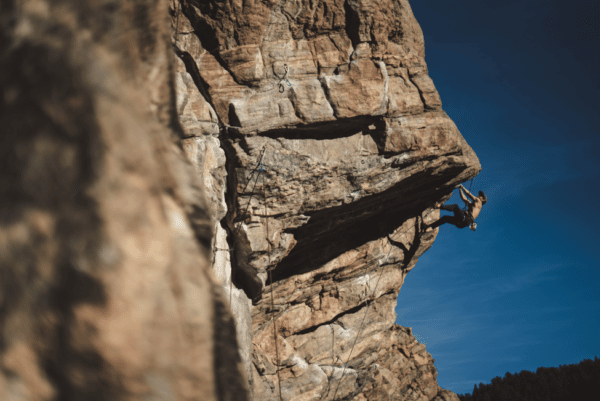
unsplash.com
Are you having back pain after climbing for hours on end? Or, maybe you get back pain intermittently when you are in certain positions, after you’ve done multiple sit starts, while bouldering, or high stepping. You are not alone.
Low back pain has been identified as the single leading cause of disability worldwide. As much as 80% of the population will experience back pain at some point in their lives13. Of those who have been treated for back pain, 85% will have a recurrence of pain within 1 year and will go on to develop chronic low back pain12,14.
What causes low back pain?
If you are not currently suffering from a specific injury to your low back, but instead have back pain with an unknown cause, there are a couple possible suspects that may be contributing to your back pain.
First, a few terms. Your spine is surrounded by a group of muscles called your core. If you think of your core as a soda can with your spine running down the middle, the front of the can is made of up of deep and superficial abdominal muscles (transversus abdominis, internal/external obliques, rectus abdominis). The back of the can is made up of your multifidus and erector spinae muscles. The bottom of the can is made up of your pelvic floor muscles and glutes. The top of the can is made up of your diaphragm. All of these muscles work together to help you maintain stability in your spine, to help you with functional movement, to help you maintain posture, to help you breathe, and to help you go to the bathroom.
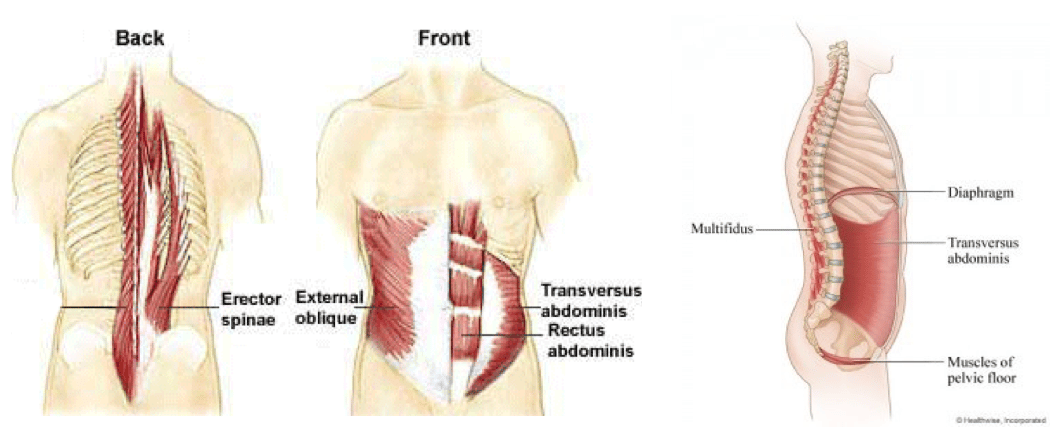
www.blissfulyogini.com and Healthwise, Inc.
Keep in mind that above and below the can are your arms and legs that are made up of joints with lots of motion. In order for you to move effectively and with control, your core has to be able to provide stability centrally so that the peripheral limbs can move freely and purposefully. In climbing, this is particularly true as the stiffness of your core can allow you to use your arms and legs to push and pull off of hand holds and foot holds. This stiffness allows you to stay on the wall, to keep your feet and hands clinging to the rock as you ascend or as you stop to assess your next move.
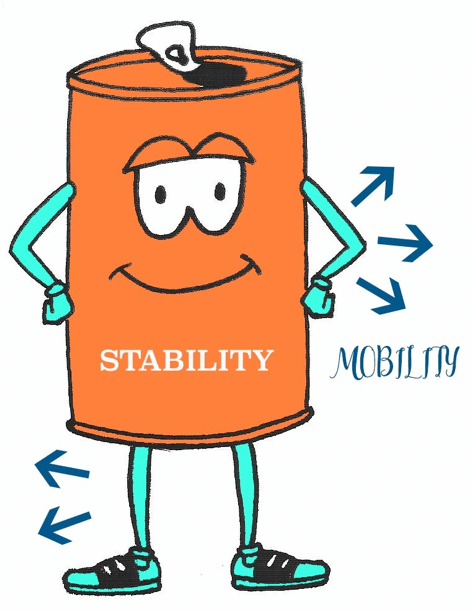
www.linkforfamilies.org
Sometimes, there can be a breakdown in the stability of your core. If you think about a can that is full and holds tension in it, it is able to hold up to pressure put on it from above, below, or side to side. However, if that can were empty and pressure was applied to it from one side, the can would crumple unevenly on one side. Once the can crumples, you can imagine how much harder it would be to control the movements of your limbs. It becomes very difficulty to move with precision, making it much more difficult for you to reach that next hold or to keep climbing without getting injured.
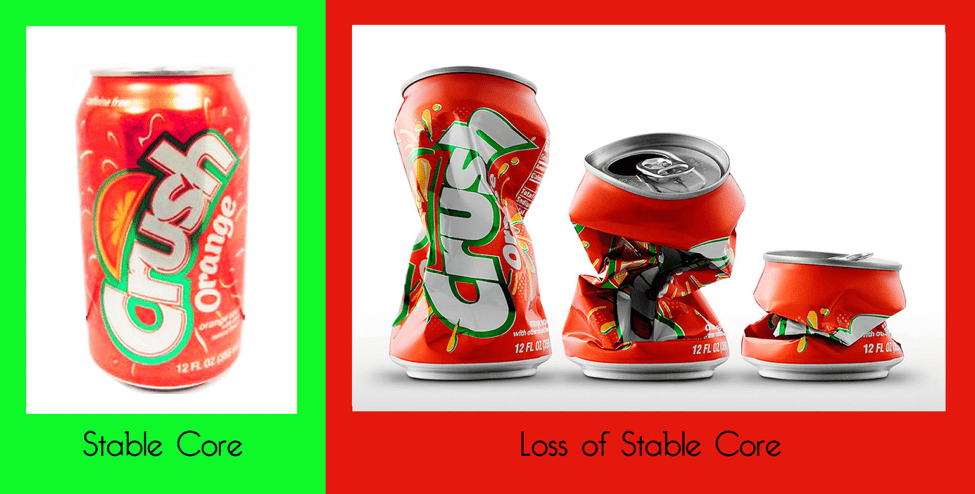
www.ebay.com, www.wheniscalendars.com
So, does climbing help my back or hurt my back?
Some studies have actually shown that climbing can help people with chronic low back pain when done in a therapeutic dosage. Keep in mind that these treatment protocols were geared towards people who were not experienced climbers and were done at a low intensity and low volume. But, promisingly enough, they did find that therapeutic climbing was able to improve quality of life, muscle activation, and to decrease pain in people suffering from chronic low back pain.
Kim et. al compared two groups of participants who all had ≥3 months of low back pain. One group performed lumbar stabilization exercises on a mat and another group participated in therapeutic climbing exercises on a climbing wall. Both groups trained 3x per week, for 4 weeks, for 30 minutes per session. The therapeutic climbing group performed a shoulder stability exercise which consisted of a push up on the wall, standing on the wall while reaching to the side for a hold slowly (3 seconds to reach the hold), and squatting on the wall. Participants performed each of these exercises for 3×10 sets with 10 second holds and 30 seconds rest in between sets. Both groups showed improvements in quality of life, but the therapeutic climbing group showed greater improvements. Secondly, both groups showed improvement in lumbar muscle activation, but the therapeutic climbing group showed greater improvement in activation of 3 abdominal muscles, the rectus abdominis and the internal and external obliques5.
Another study done by Schinhan et. al looked at people who had chronic low back pain and no climbing experience. One group in this study received no treatment at all, while the other group underwent a therapeutic climbing program. Those in the climbing program did 5 different bouldering routes over 10 sessions in 8 weeks, at least 1x/week for at least 1 hour per session. Five indoor bouldering routes were set, 3 of which were on an overhang. Participants were instructed in climbing techniques by an experienced climber for their first climbing session, including tips on how to use different handholds, finger placement for handholds, foot placement on the wall, and how to maintain their pelvis close to the wall. Participants in the climbing group were found to have decreased pain (based on a self-reported pain scale), and they also showed a reduction in size of disc protrusion on MRI15.
Additionally, studies have also shown that low load exercises versus high load lifting have helped relieve back pain, improve movement control, and endurance in people with recurrent low back pain1.
So, how does this apply to your climbing? At low volumes and intensity, climbing can help with your back pain. And, low loads, controlled movement, and slow and intentional movement are also a key part of using climbing to be therapeutic for your back pain. But, if you are training beyond that volume and intensity and you are having back pain, read on to find out more.
Why does climbing more make my back pain worse?
-
Muscle imbalance
Many people have what is called a muscle imbalance, which can lead to back pain. Let’s go back to the soda can analogy. If your can is strong on one side but weak on the other, this could contribute to a muscle imbalance and a crumpled can. Likewise, if you spend most of your day sitting in front of your computer, you may have shortened or stiffer hip flexors and lumbar extensors and weakened glutes and abdominals. This further exacerbates the unevenness of your can.This makes it harder as it is for your core to support your body in daily activities, like just walking or sitting, let alone the high demands of climbing. Once more demand is put on the system, like when you are climbing, it can contribute to a breakdown in your optimal movement, leaving you more prone to injury or pain.
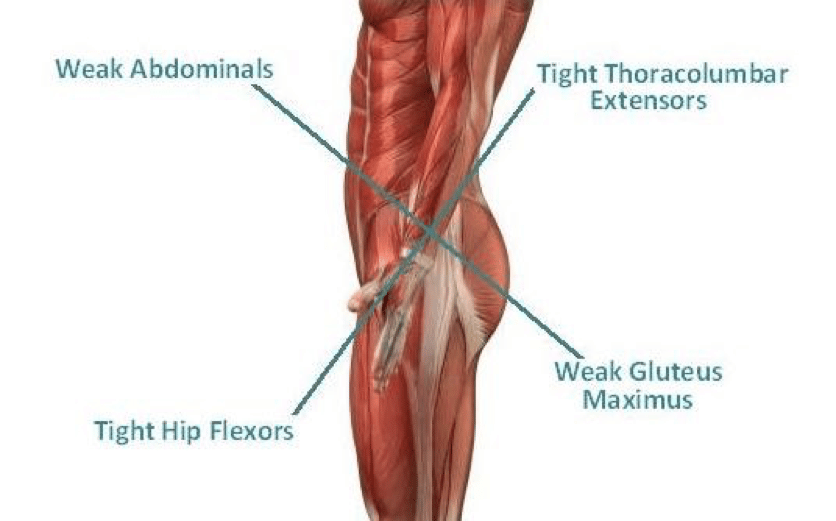
www.clini-hq.co.uk
-
Delayed muscle reaction
Low back pain has also been associated with delayed activation of core muscles, most strikingly seen in the transversus abdominis. In people without back pain, this core muscle activates prior to the firing of the muscles that actually move your arms or legs. In other words, before you move your limbs, this muscle stiffens your trunk in anticipation of whatever limb movement you are going to make. However, in people with low back pain, it was found that the activation of this muscle was delayed and therefore is less able to stabilize your trunk as your limbs move4. In terms of your climbing, this means that if you have back pain, before you reach for your next hold or step to your next foothold, your core has not reached its optimal stiffness in order to protect your low back.
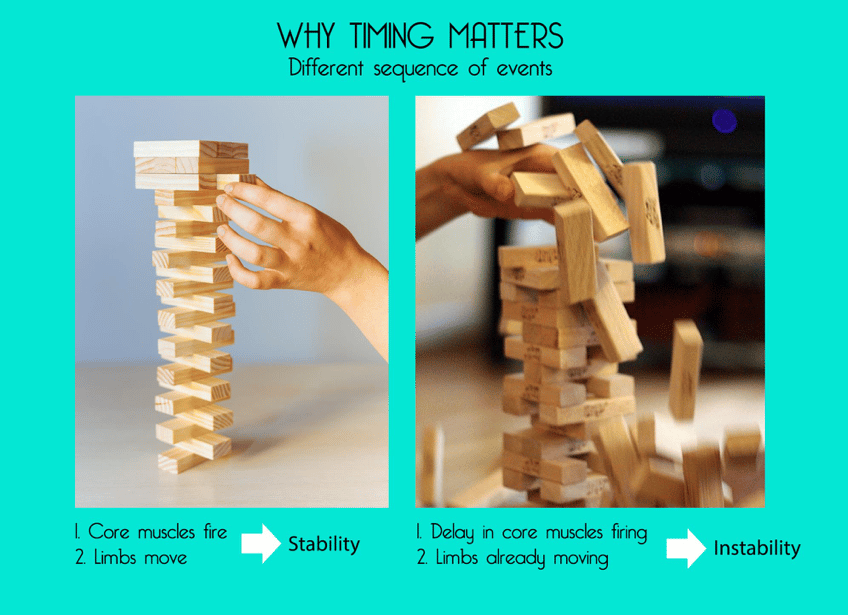
www.gameonfamily.com, www.diginomica.com
-
Decreased proprioception
Proprioception is your body’s ability to sense its position in space. For example, when you walk in the sand, it is your body’s ability to sense where your foot is in relation to the sand to allow your ankle to respond, make adjustments, and keep you steady. Low back pain, too, has been associated with a decreased sense of the ability to recognize changes in position and decreased postural control6,8. Let’s say you are standing on your right toe with your foot smeared against the wall. At the same time, you have to flag and reach to your right for a sloping handhold. You can’t see your foot or your next hold. This is when your body’s sense of where it is in space becomes critical. If your core is at the center of your body, it is keeping the majority of your mass balanced over your right toe as you lean to your right. It is very similar to a teeter-totter balancing over its fulcrum. Your body needs to know how much to lean to get you to the next hold without leaning too far to knock you off balance.
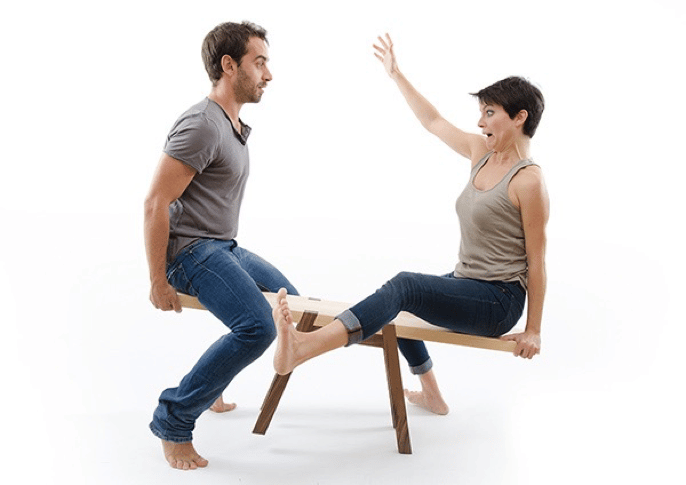
www.yankodesign.com
All of these factors make it harder for your body to move as efficiently, so when you start climbing and you add extra demand to the system, these breakdowns in the system become more pronounced.
So, how can I decrease my back pain?
You can start by practicing something called abdominal bracing. This means simply practicing creating that stiffness throughout your can. All of the muscles around the spine and core stiffen to create stability—like when you cough, laugh, or brace like you are going to get hit in the stomach—and then you adjust the amount you need to brace based on the demand of the task at hand. So to activate that stiffness throughout your core, all you have to do is practice one of those activities: laugh, cough, blow out a candle, or blow up a balloon. Once you understand how that stiffness feels, you can start carrying that same stiffness into other activities that are more pertinent to your climbing maneuvers.
McGill et. al created a set of basic movements which can serve as a starting point for beginning to use that core stiffness in more functional positions11.
-
Side Plank
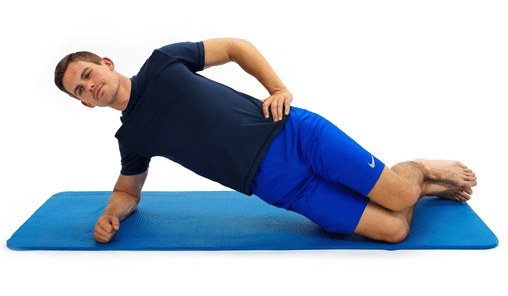
www.hep2go.com
Lie on your side, with your elbow underneath your shoulder. Lift your hips off of the ground, while maintaining your abdominal brace. Imagine your body is as straight as an arrow from your head to your hips to your feet/knees, so that your body could fit between 2 panes of glass.
Beginner: Keep your knees bent and push up onto your elbow and knees. Hold 7-8 seconds per side, 10 reps. Do daily.
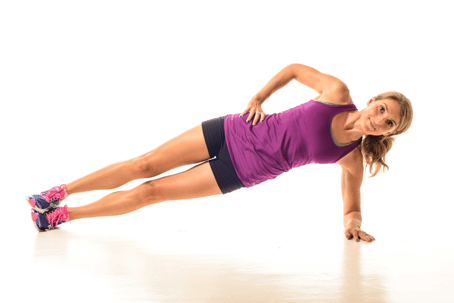
www.plankpose.com
Intermediate: Straighten your legs and push up onto your elbow and feet. Hold 10 seconds, 15 reps. Do daily.
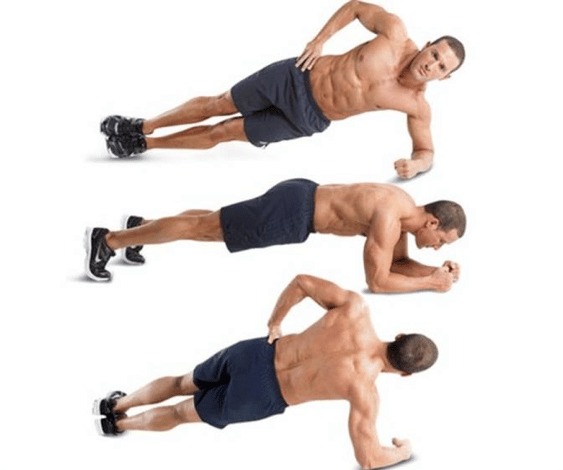
www.divespearandsport.com.au
Advanced: Rotate from one side to the other. Hold 10 seconds, 20 reps. Do daily.
-
Bird dog
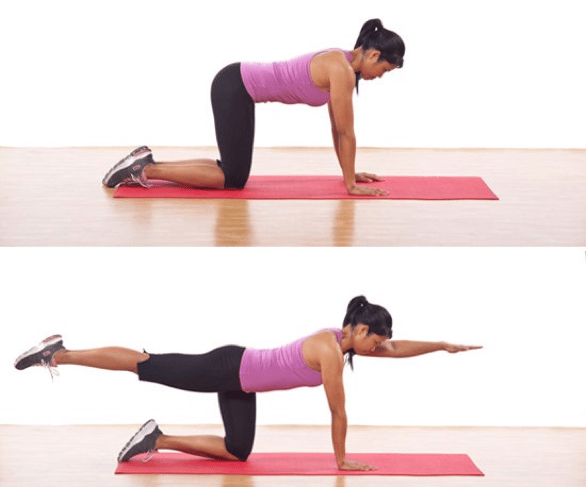
www.barokah.briomotor.com
Get on the floor on your hands and knees with your wrists under your shoulders and knees under your hips. Make sure that your back is relatively flat. Raise your right arm by your ear and your left leg straight back so that your arm and leg are in line with you torso. Hold 7-8 seconds, 10-15 reps. Repeat on the other side.
Progress this exercise by using an unsteady surface under the knees, or under the knees and hands.
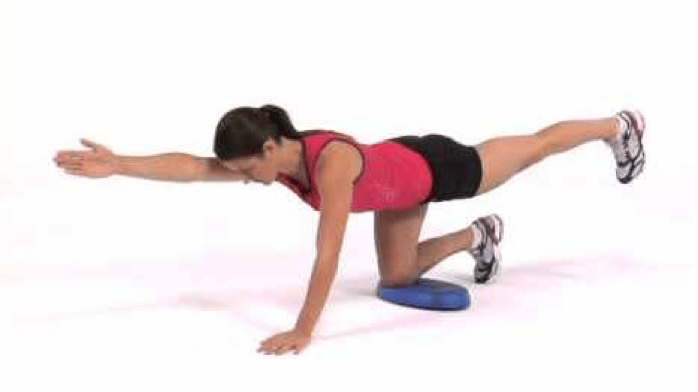
toutube.com/gfit
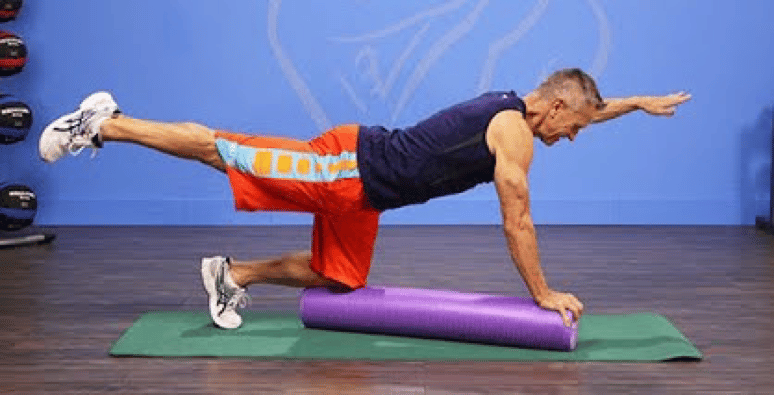
youtube.com/jgfittv
Or, make it even more challenging by lifting knees off of the floor and then lifting opposite arm and leg.
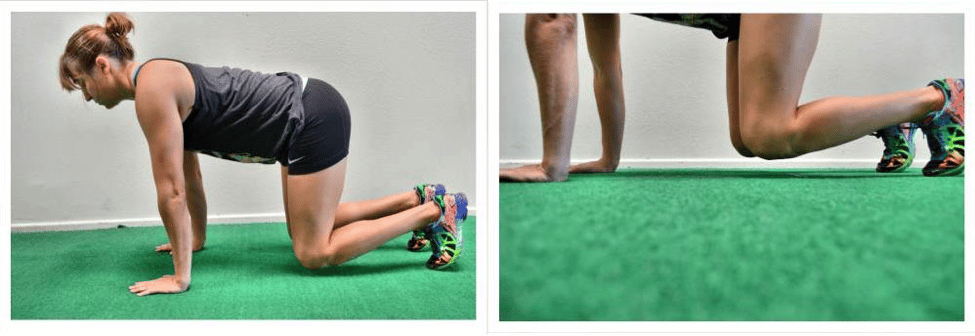
www.redefiningstrength.com
-
Curl up
Lay on your back. Tuck your hands under your low back and take note of the natural curve in your spine. You want to maintain that position in your low back throughout the exercise. Bend one knee so that your foot is resting on the floor. Then, begin to lift your head and shoulders off of the floor. Try to keep your neck in a neutral position so you are not craning your neck forward or backward. Hold 7-8 seconds, do 10-15 reps.
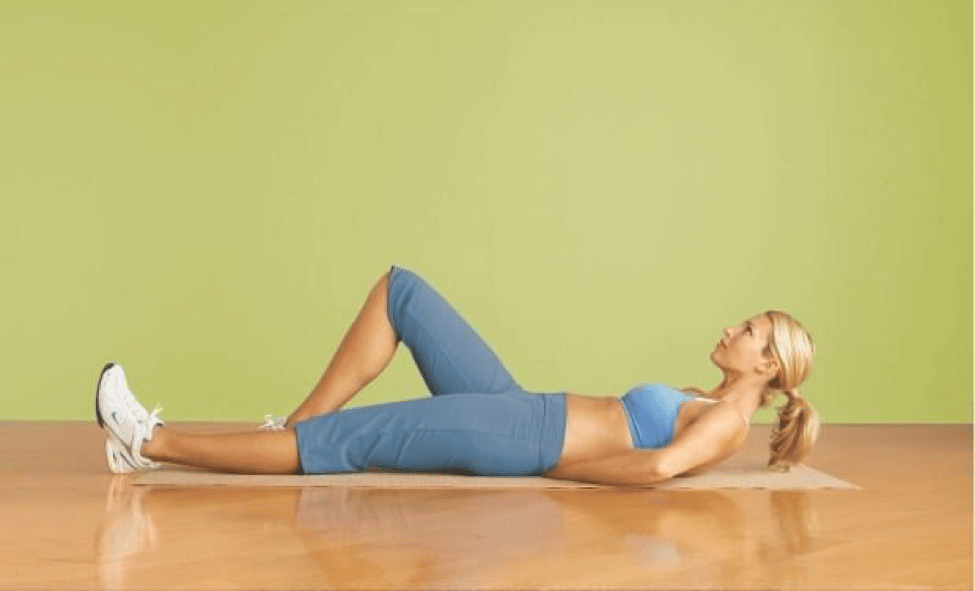
www.prevention.com
If you are looking for a reference point, McGill collected some data on college aged men and women for average hold times for different movements, which you can see in the table9.
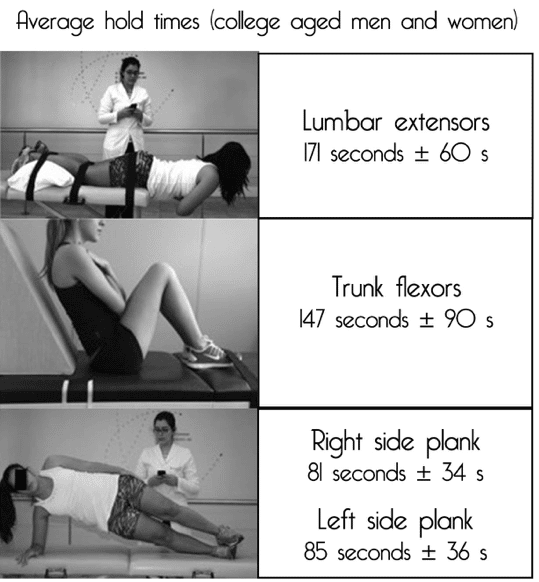
Dr. Jared Vagy, DPT, also known as “The Climbing Doctor” teamed up with Steve Bechtel to develop some core exercises that would serve as a progression to the V hold and the side plank into more climbing-specific exercises that you can use.
- Plank pull down
- Plank Knee drive
- Double knee drive
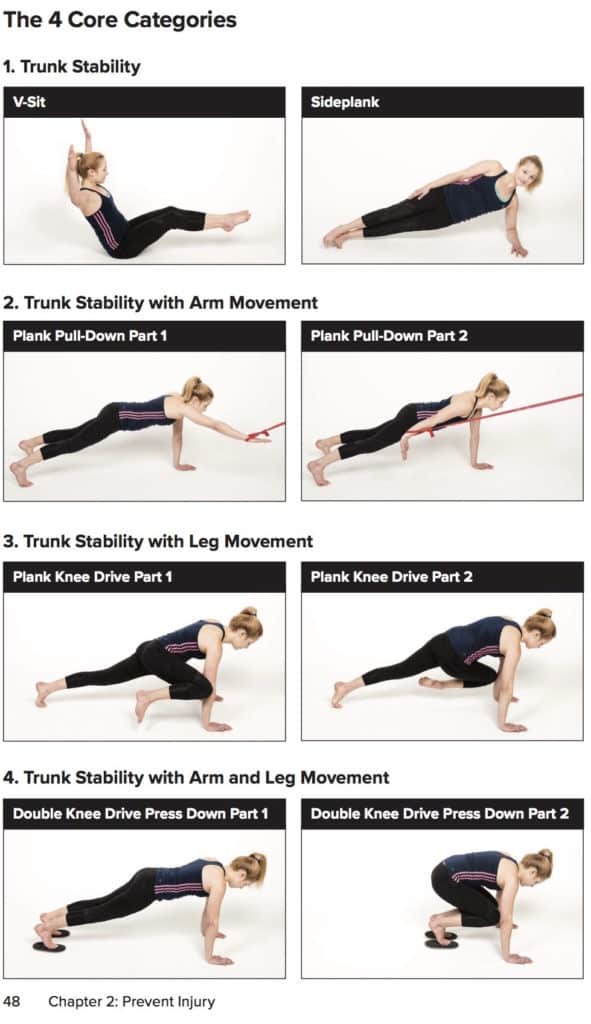
Additional Factors to Consider
However, let’s say you are pretty good at creating this stiffness in your core even during challenging exercises, but you still have back pain. You have the strength, but you may not be applying it in the most effective manner because of your movement patterns. How you move is extremely important because, even if you have all the other tools in place (mobility, strength, endurance), if you are not moving optimally and using good climbing technique, you will still be in pain and have injuries. When you climb, you repeat the same kinds of movements over and over again, and if you continue to do them poorly each time, it causes extra stress to your back, which makes your back hurt more after you climb.
Here are a couple of factors to consider that may help you begin to address your back pain. First, you should take note of what sets off your back pain — whether that be your climbing volume, the intensity level at which you are climbing, or the positions you get into that ‘always hurt’ when you do them, especially if those correlate to positions in your everyday life that also hurt your back.
For example, if you do find that your back pain is greatest when you are crouched down in a sit start and you also find that you have the same symptoms when you are later sitting at your desk hunched over your computer, that may be your body telling you that it has a preference for staying out of that position. If you have a difficult time being in a sit position without having to really curl your tailbone under and round out your back, try placing your feet wider apart or turning your toes out slightly. Or alternatively, start with your hands placed on higher holds so you do not have to crouch down so low.
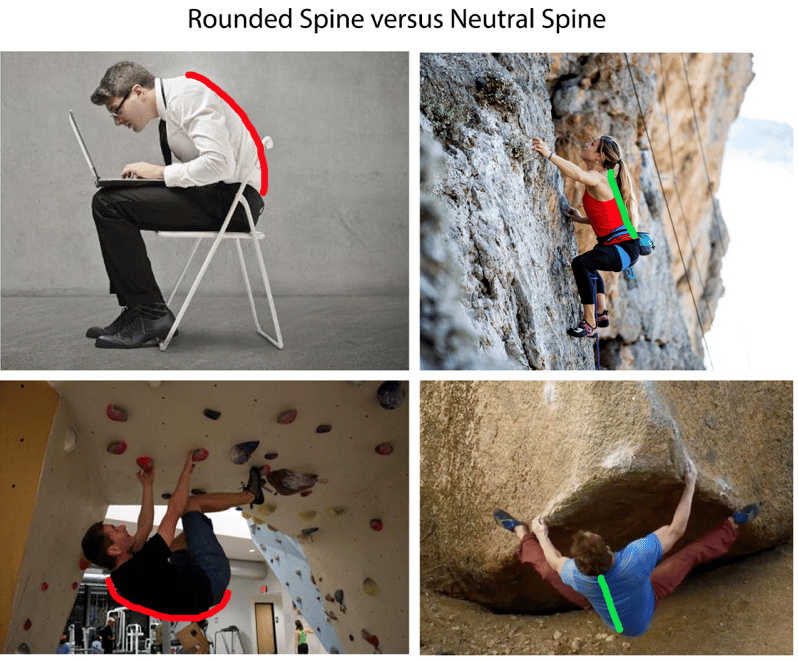
www.consciouslifenews.com, www.truenaturetravels.com, www.youtube.com/bishopbouldering, www.gleanernow.com
You may also benefit from positions which counter that hunched low back position and allow your low back to take on its natural curve or arch inward (known as lumbar lordosis). You may notice some relief with lying on your stomach for 5 minutes on a firm surface, which allows your low back to take on its natural curvature. Or, as a progression, you may find that you have relief with repeating a cobra position that also encourages that natural curve in your low back. In this way, you gently coax and train your body into a different motor pattern that expands your available pain-free library of movements.
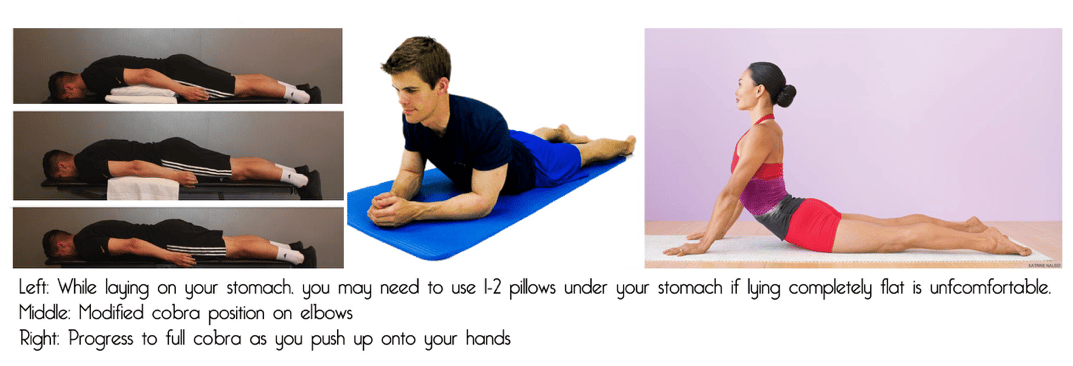
www.hep2go.com, www.yogajournal.com
Or, you may be someone who climbs a lot and you have already adopted somewhat of a climber’s back, in which case you may have an exaggerated arch in your low back and a hunched back in your thoracic spine. In this case, working on your posture and trying to improve those muscle imbalances throughout your day is key—improving your thoracic extension/mobility, loosening and/or lengthening the muscles of your chest, and maintaining that stiffness around your trunk. And then translate that posture into your climbing as much as possible.
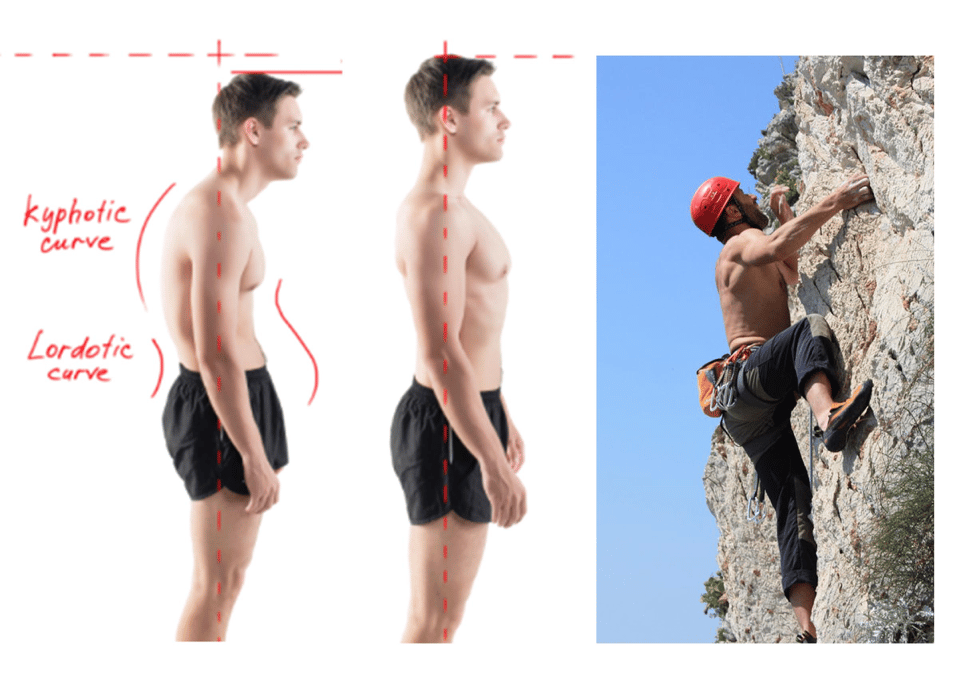
www.pinterest.com, www.given2flyadventures.com
The point is that all these little movements that you do day in and day out, hour after hour, will translate into how you climb. And, the movements that you perform when you are climbing multiple times a week for hours at a time, begin to add up to a lot of time. So if you are spending time sitting up straight and standing up straight, and you are spending time climbing with good posture, hips close to the wall, elbows straight and using your legs and feet to push you, you will be less likely to feel those aches and pains. Because you are training your body to move more efficiently with each motion you do, which adds up to a lot of motion over hours, day, weeks, months, and years.
But isn’t it hard to identify what the problem is if you are moving well or not, and then coming up with a plan for how to change that all by yourself? Yes, it is! This is where a movement expert, like a Physical Therapist, can really make a difference for you by helping you recognize what your faulty movement patterns may be. And a good start is to be able to begin getting in tune with how you move by either videotaping yourself climbing, having someone else watch you and give you feedback, or by simply paying more attention to your technique as you climb.
Author Bio

Dr. Karen Hsu owns and operates Karen Hsu Physical Therapy in Los Angeles, CA. She earned her Doctorate of Physical Therapy from USC. She works one-on-one with all of her patients for a full hour to get you back to the activities and lifestyle you love without pain or limitations. She combines her knowledge of physical therapy with the teachings of yoga and pilates to provide integrative care.
Dr. Hsu has been fortunate enough to travel and rock climb in West Railway Beach, Thailand, Guilin, China, and in the Patagonia. She loves the camaraderie of rock climbing and spending time among big rocks with her friends. She also loves all things adventure related, including surfing, trail running, and camping.
For more info, visit www.karenhsupt.com
Facebook: www.facebook.com/karenhsupt
Instagram: www.instagram.com/drkarenhsu
References
- Aasa B, Berglund L, Michaelson P, Aasa U. Individualized low-load motor control exercises and education versus a high-load lifting exercise and education to improve activity, pain intensity, and physical performance in patients with low back pain: a randomized controlled trial. J Orthop Sports Phys Ther. 2015 Feb;45(2):77-85, B1-4.
- Brumitt J, Matheson JW, Meira EP. Core stabilization exercise prescription, part I: current concepts in assessment and intervention. Sports Health. 2013 Nov;5(6):504-9.
- De Oliveira, IO, Roberto BP, Santos Junior LG, et al. Reference values and reliability for lumbopelvic strength and endurance in asymptomatic subjects. Brazilian Journal of Physical Therapy. 2018;22(1):33-41.
- Hodges PW, Richardson CA. Inefficient Muscular Stabilization of the Lumbar Spine Associated With Low Back Pain: A Motor Control Evaluation of Transversus Abdominis. Spine. 1996;21(22):2640-2650.
- Kim, SH, Seo DY. Effects of a therapeutic climbing program on muscle activation and SF-36 scores of patients with lower back pain. Journal of Physical Therapy Science. 2015;27(3):743-746
- Kim JS, Jun MY, Bae SS. The effect of dynamic lumbar stabilization exercise on low back pain patients. J Kor Soc Phys Ther. 2001;13: 495–507.
- Kim JS, Lee CH, Choi MJ, et al. A comparison of the improvement of symptoms between deep abdominal muscle exercises group and superficial abdominal muscle exercises group and superficial abdominal muscle exercises group in patients with chronic low back pain. J Korean Acad Orthop Man Ther; 2005(11): 1–10.
- Lee HO. Activation of trunk muscles during stabilization exercises in four point kneeling. J Kor Soc Phys Ther. 2010; 22: 33–38.
- McGill SM, Childs A, Liebenson C. Endurance times for low back stabilization exercises: clinical targets for testing and training from a normal database. Arch Phys Med Rehabil. 1999;80(8):941-4.
- McGill SM. Low back stability: from formal description to issues for performance and rehabilitation. Exerc Sport Sci Rev; 2001(29): 26–31.
- McGill S. Low Back Disorders: Evidence-Based Prevention and Rehabilitation. 2nd ed. Champaign, IL: Human Kinetics; 2007.
- Moseley GL, Hodges PW, Gandevia SC. Deep and superficial fibers of the lumbar multifidus muscle are differentially active during voluntary arm movements. Spine; 2002 (27): E29–E36.
- Rubin Dl. Epidemiology and Risk Factors for Spine Pain. Neurol Clin. 2007 May;25(2):353-71.
- Rymut DJ: Experiences of family nurse practitioners with patients with chronic low back pain. Master’s thesis. University of Alaska Anchorage, 2006.
- Schinhan M, Neubauer B, Pieber K, et al. Climbing Has a Positive Impact on Low Back Pain: A Prospective Randomized Controlled Trial. Clin J Sport Med. 2016 May;26(3):199-205.
- Disclaimer – The content here is designed for information & education purposes only and the content is not intended for medical advice.

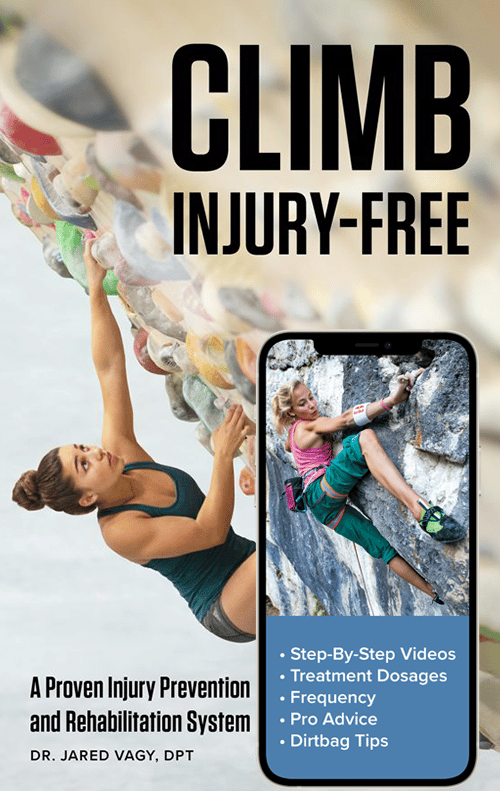
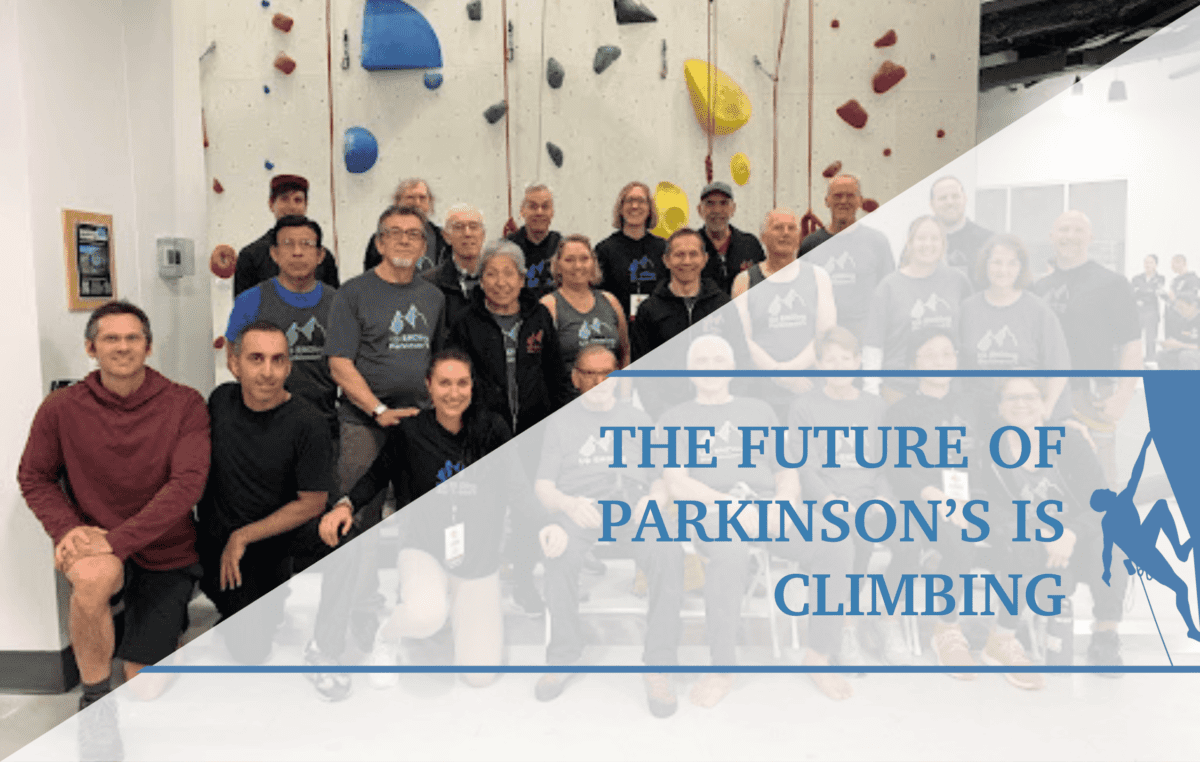

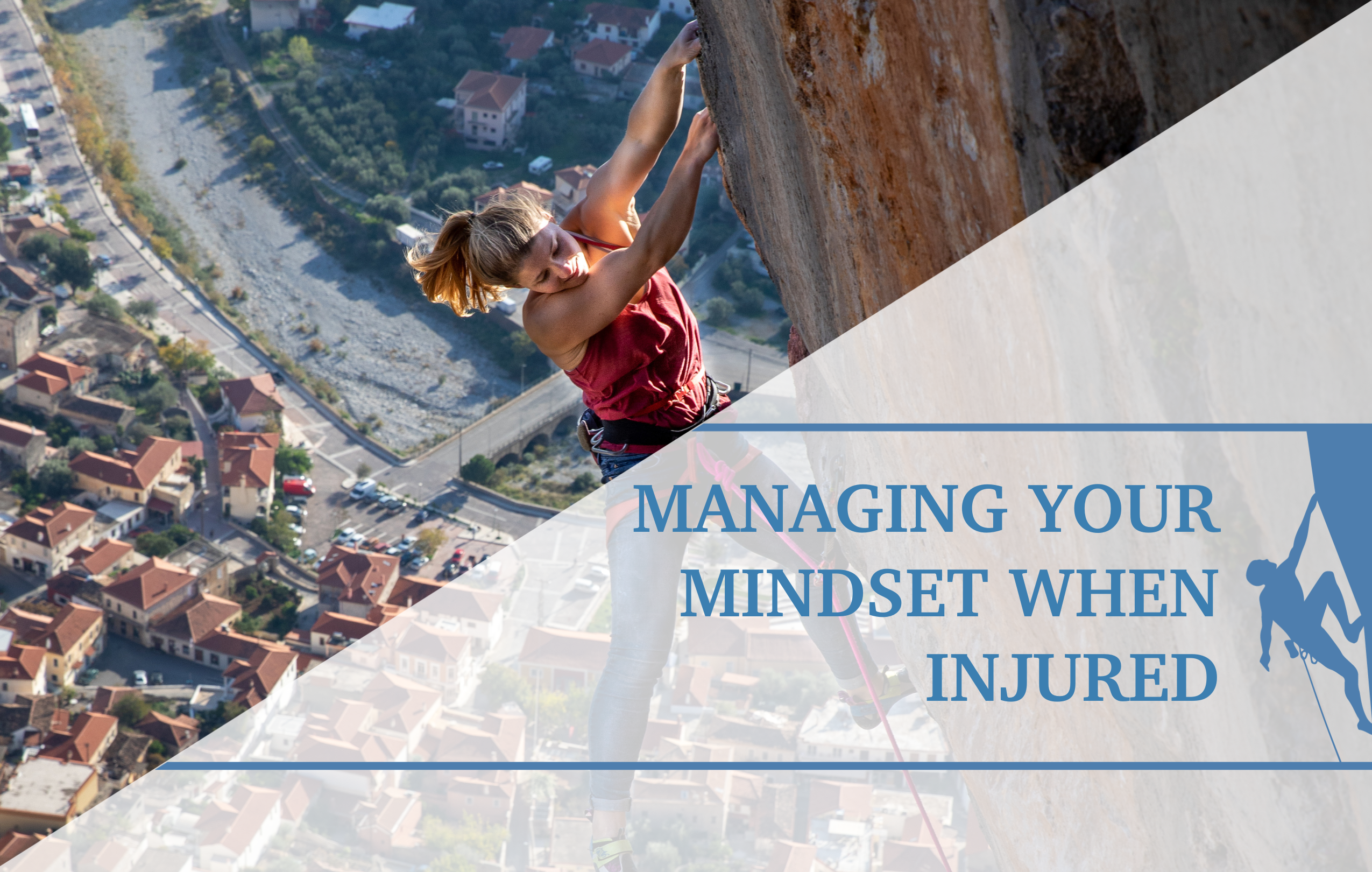
Thank you
Good article, Thanks for putting a clear and concise message and pictures of re mobility exercises.
I suffer from chronic injury-related lower back pain and i am considering getting either a Versaclimber or a RopeFlex trainer because i need to get back into a good cardio condition. As it can easily be inferred, from the moment these injuries occured i had to stop doing any form of cardio which would aggravate the condition, i.e. running and jumping rope; i also used to practice Karate and had to leave that as well; not to mention rowing. Needless to say, my cardio was invariably and irretrievably lost.
Would either of the afore mentioned machines be a feasible option to regain the long-lost condition?
Let me know and many thanks.
Answered by Jared Vagy DPT: If impact activities aggravate back pain (running, jumping rope, etc…) and your goal is to maintain cardiovascular fitness, non-impact of low-impact cardiovascular activities are recommended. The options you mentioned are just a few. Also swimming, speed climbing, UBE bike, elliptical, and rowing machine are a few others.
This was incredibly helpful and glad to see it is evidence based! I’ve been having back pain since I started climbing and will work on these exercises.